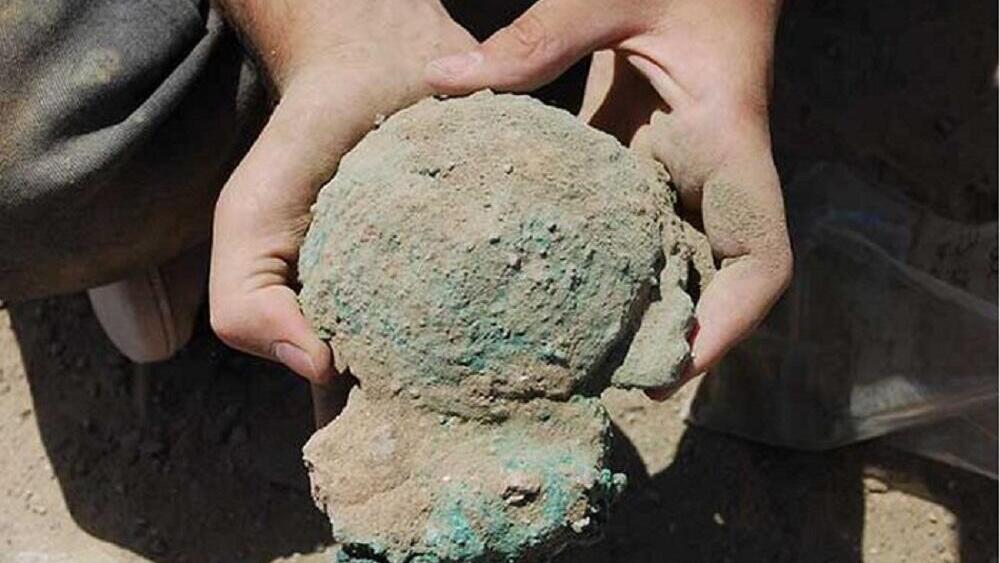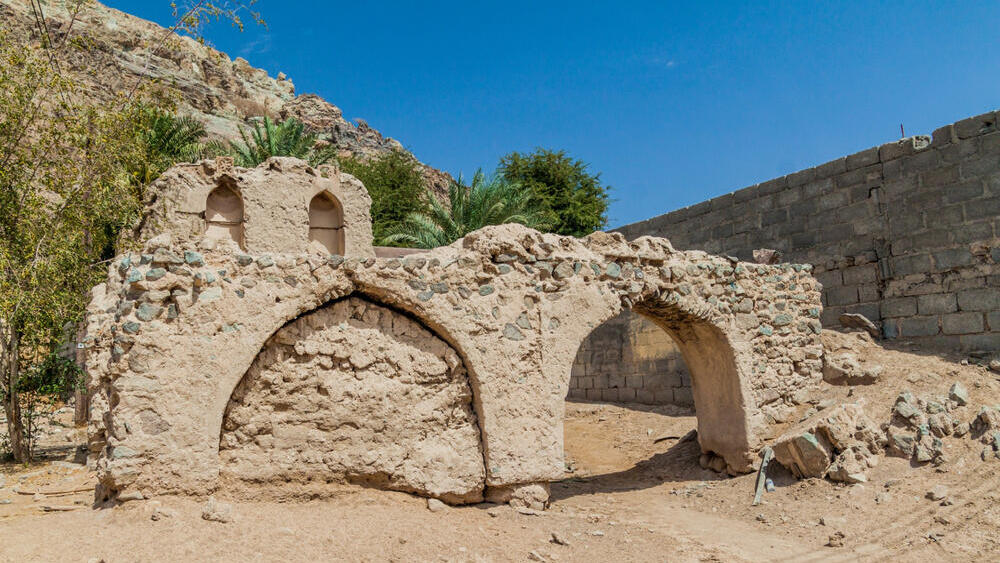Archaeologists uncovered three copper ingots that are over 4,300 years old in the area near the city of Ibra in Oman, while excavating an area where an ancient settlement was located. The research team stayed in the country, which is located in the southeastern part of the Arabian Peninsula, for six weeks while conducting a field study under the supervision of the Oman Ministry of Heritage and Tourism. The rare and ancient discovery sheds light on the lifestyle of the residents of the area at that time.
More stories:
The goal of the researchers was to date the settlement and then dig test pits in the ground. Three copper ingots estimated to be more than 4,300 years old and each weighing about 1.7 kg were discovered in the excavations. This is an extremely rare find, which was accidentally left in the place where it was found, apparently by the residents who abandoned the settlement.
The settlement identified by the pair of doctoral students from Goethe University in Frankfurt, Jonas Kluge and Irini Biezeveld, is from the Early Bronze Age (approximately 2600-2000 BC). During this period, the area where Oman is located today was considered one of the most important producers and suppliers of copper for ancient Mesopotamia. It is located where Iraq is today, as well as the Indus Valley Civilization, which was one of the earliest urban civilizations in the world and spanned the area where Pakistan and India are now located. In fact, copper ore was mined in abundance in this arid region.
Copper was considered a coveted commodity, as extensively documented in cuneiform texts from Mesopotamia. Since copper ingots were usually further processed in order to make tools and other objects from them, they were rarely uncovered in archaeological excavations, all the more so when it comes to the discovery of the ingots in an Early Bronze Age settlement.
The copper ingots have a plano-convex shape that was typical of the period, which was created by pouring the molten copper into a small ceramic vessel, or crucible. Through the discovery of the copper ingots, it is possible to learn more about Oman's role in inter-regional trade relations during the Early Bronze Age, as well as about the metalworking technologies already known at that time.
Smelting copper required the use of a large amount of fuel, which probably posed a great challenge in an arid and sparsely vegetated area like Oman. Therefore, questions that remain open for the researchers and which they will want to answer are how people in the Early Bronze Age got along with the scarce resources they had and whether it was possible for them to use those scarce resources in a sustainable manner.
Several pottery shards of large storage vessels from the Indus culture that also were discovered during the German team's excavations, provided evidence that there were indeed close trade relations between the settlement discovered in Oman and the Indian subcontinent. Therefore, it seems that even a small and fairly rural settlement in central Oman was part of a system of interregional trade and commodity exchange.



